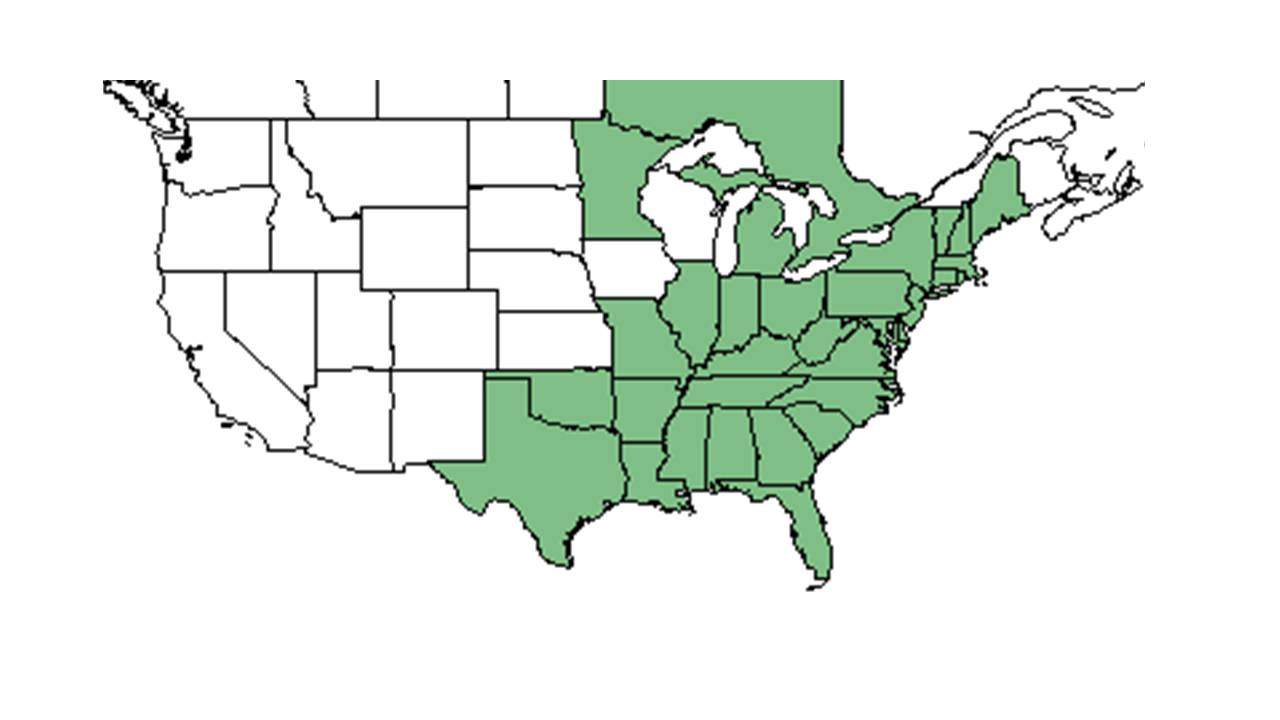Difference between revisions of "Lespedeza frutescens"
(→References and notes) |
(→Description) |
||
| Line 22: | Line 22: | ||
==Description== | ==Description== | ||
<!-- Basic life history facts such as annual/perrenial, monoecious/dioecious, root morphology, seed type, etc. --> | <!-- Basic life history facts such as annual/perrenial, monoecious/dioecious, root morphology, seed type, etc. --> | ||
| + | “Annual or perennial herbs or shrubs. Leaves pinnately 3-folioate; leaflets entire, estipellate; stipules persistent, setaceous to ovate-lanceolate. Inflorescence usually few-to-many-flowered, loose to compact, sessile to long-pedunculate, axillary or terminal, spictate, racemose, capitate or rarely paniculate cluster; pedicels subtended by a bract and with a pair of inconspicuous bractlets immediately beneath the flower. Both apetalous (cleistogamous) and petaliferous (Chasmogamous) flowers present in most species, but the apetalous flower are more readily detected and more abundant in some species than others. Calyx persistent in fruit, the tube campanulate to cylindric with 5 nearly equal lobes or the upper 2 partly united and shorter; corolla papilionaceous, violet, purplish, roseate, yellow or whitish; stamens diadelphous, 9 and 1. Legume 1-seeded, indehiscent, sessile or stalked, flattened, elliptic, ovate or orbicular.” – Radford et al 1964 | ||
| + | |||
| + | "Erect perennial with stems 2-10 dm tall, sparely to densely strigillose or more rarely ascendent-puberulent, becoming glabrate or nearly so below. Leaflets oblong to oblong-elliptic or less commonly or in the uppermost leaves elliptic, ovate, obovate or even suborbicular, the principal leaflets 1.5-4 cm long, those of the upper leaves and of the lateral branches 0.5-2 cm long, usually glabrate to sparsely strigillose or appressed short-pubescent beneath; stipules narrowly linear-subulate to setaceous, mostly less than 4 mm long. Flowers borne in dense, sessile to short-peduncles and axes sparsely to densely strigillose; pedicels of Chasmogamous flowers 1-4 mm long, those of the cleistogamous flowers 0.5-1 mm long. Calyx appressed short-pubescent to strigillose; petals purplish, wings longer than keel and nearly as long as standard. Legume reticulate, sparsely to densely strigillose, elliptic to almost orbicular, 3-7 mm long." - Radford et al 1964 | ||
==Distribution== | ==Distribution== | ||
Revision as of 21:07, 3 February 2016
| Lespedeza frutescens | |
|---|---|

| |
| Scientific classification | |
| Kingdom: | Plantae |
| Division: | Magnoliophyta - Flowering plants |
| Class: | Magnoliopsida – Dicotyledons |
| Order: | Fabales |
| Family: | Fabaceae ⁄ Leguminosae |
| Genus: | Lespedeza |
| Species: | L. frutescens |
| Binomial name | |
| Lespedeza frutescens (L.) Hornem. | |

| |
| Natural range of Lespedeza frutescens from USDA NRCS Plants Database. | |
Common name: shrubby lespedeza
Contents
Taxonomic notes
Description
“Annual or perennial herbs or shrubs. Leaves pinnately 3-folioate; leaflets entire, estipellate; stipules persistent, setaceous to ovate-lanceolate. Inflorescence usually few-to-many-flowered, loose to compact, sessile to long-pedunculate, axillary or terminal, spictate, racemose, capitate or rarely paniculate cluster; pedicels subtended by a bract and with a pair of inconspicuous bractlets immediately beneath the flower. Both apetalous (cleistogamous) and petaliferous (Chasmogamous) flowers present in most species, but the apetalous flower are more readily detected and more abundant in some species than others. Calyx persistent in fruit, the tube campanulate to cylindric with 5 nearly equal lobes or the upper 2 partly united and shorter; corolla papilionaceous, violet, purplish, roseate, yellow or whitish; stamens diadelphous, 9 and 1. Legume 1-seeded, indehiscent, sessile or stalked, flattened, elliptic, ovate or orbicular.” – Radford et al 1964
"Erect perennial with stems 2-10 dm tall, sparely to densely strigillose or more rarely ascendent-puberulent, becoming glabrate or nearly so below. Leaflets oblong to oblong-elliptic or less commonly or in the uppermost leaves elliptic, ovate, obovate or even suborbicular, the principal leaflets 1.5-4 cm long, those of the upper leaves and of the lateral branches 0.5-2 cm long, usually glabrate to sparsely strigillose or appressed short-pubescent beneath; stipules narrowly linear-subulate to setaceous, mostly less than 4 mm long. Flowers borne in dense, sessile to short-peduncles and axes sparsely to densely strigillose; pedicels of Chasmogamous flowers 1-4 mm long, those of the cleistogamous flowers 0.5-1 mm long. Calyx appressed short-pubescent to strigillose; petals purplish, wings longer than keel and nearly as long as standard. Legume reticulate, sparsely to densely strigillose, elliptic to almost orbicular, 3-7 mm long." - Radford et al 1964
Distribution
Ecology
Habitat
It is found in the herbaceous cover in young Arkansas loblolly pine plantations.[1]
Phenology
Seed dispersal
Seed bank and germination
Fire ecology
Pollination
Use by animals
Diseases and parasites
Conservation and Management
Cultivation and restoration
Photo Gallery
References and notes
Radford, Albert E., Harry E. Ahles, and C. Ritchie Bell. Manual of the Vascular Flora of the Carolinas. 1964, 1968. The University of North Carolina Press. 613-7. Print.
- ↑ Sweeney, J. M., C. R. Wenger, et al. (1981). Bobwhite quail food in young Arkansas loblolly pine plantations. Arkansas Experiment Station bulletin 852. Fayetteville, AR, University of Arkansas, Divisionn of Agriculture, Agricultural Experiment Station.